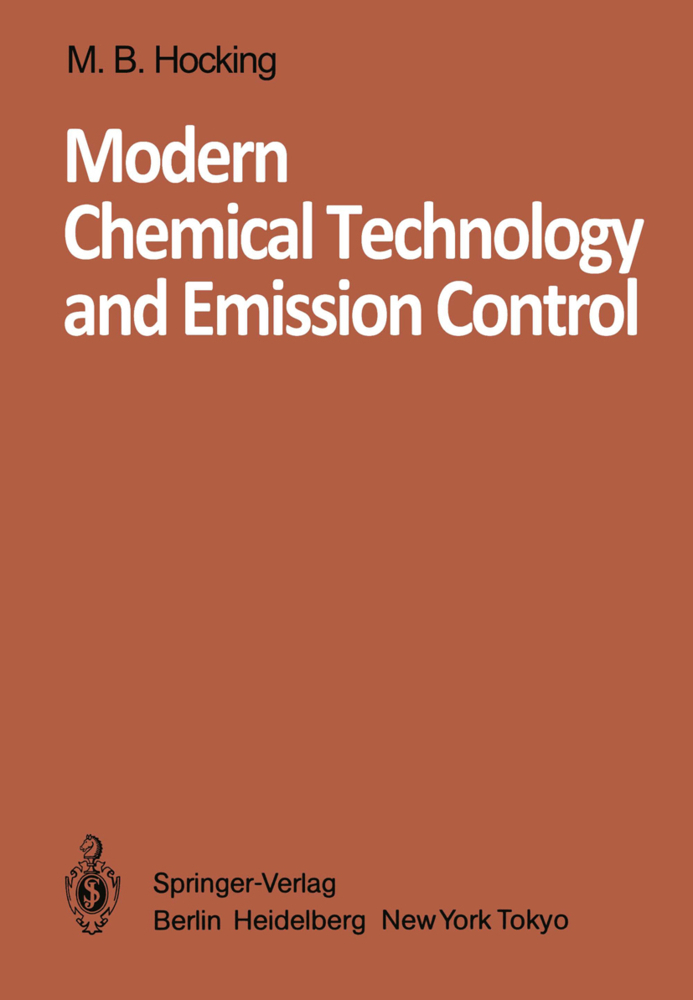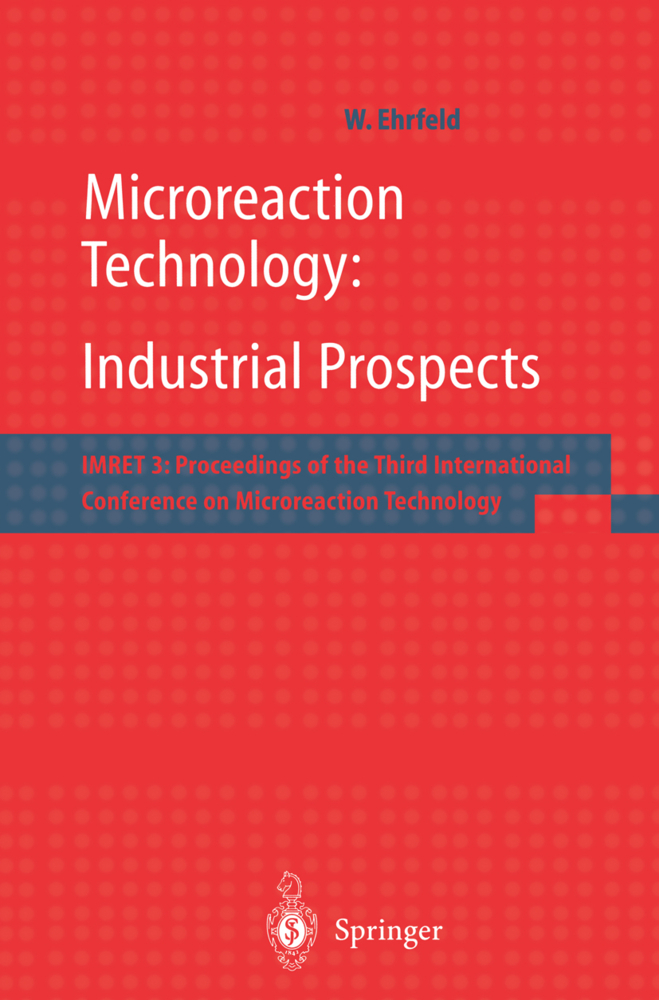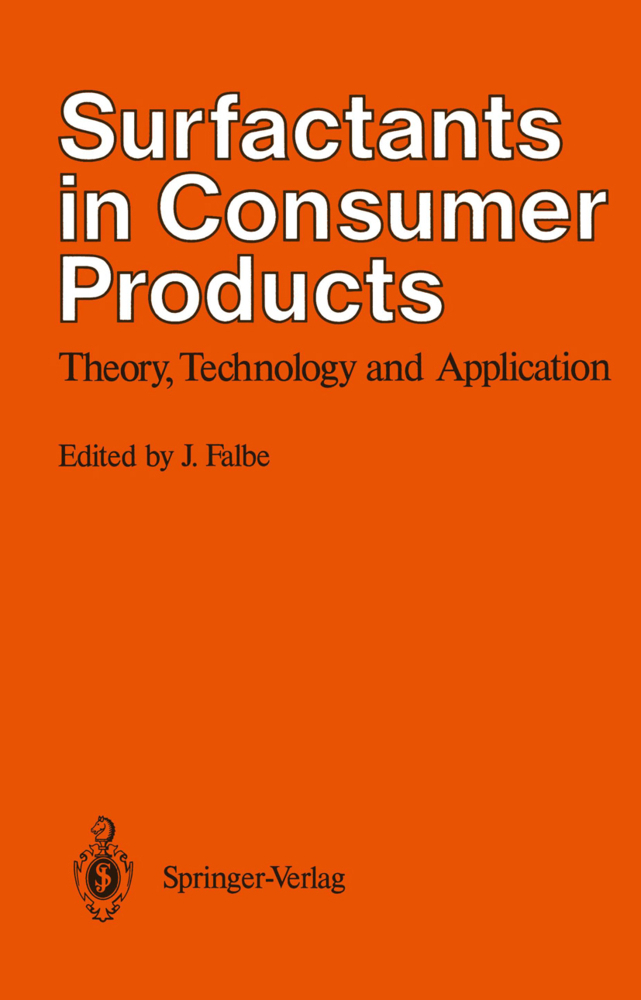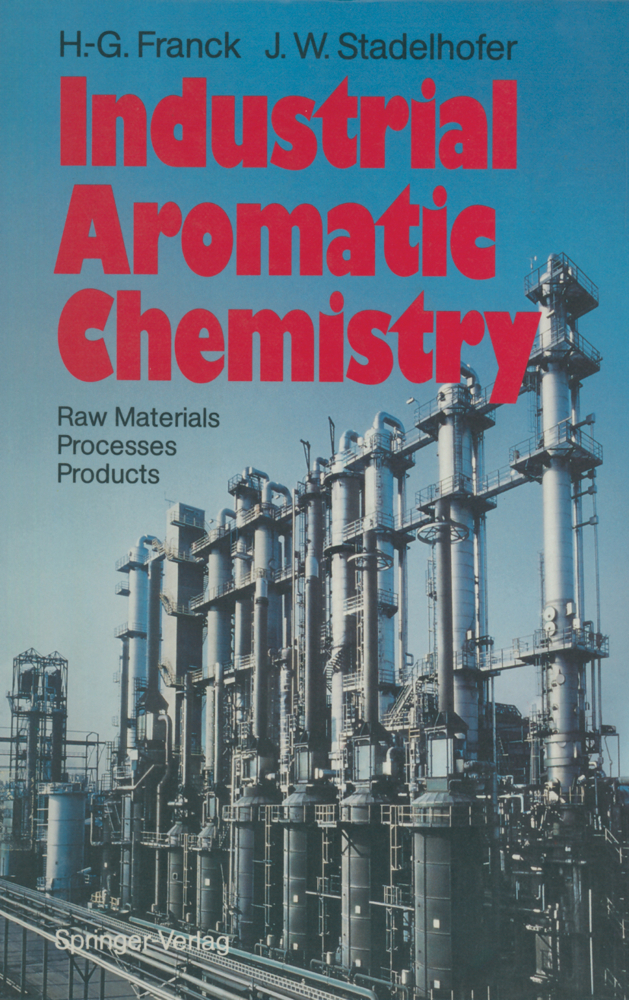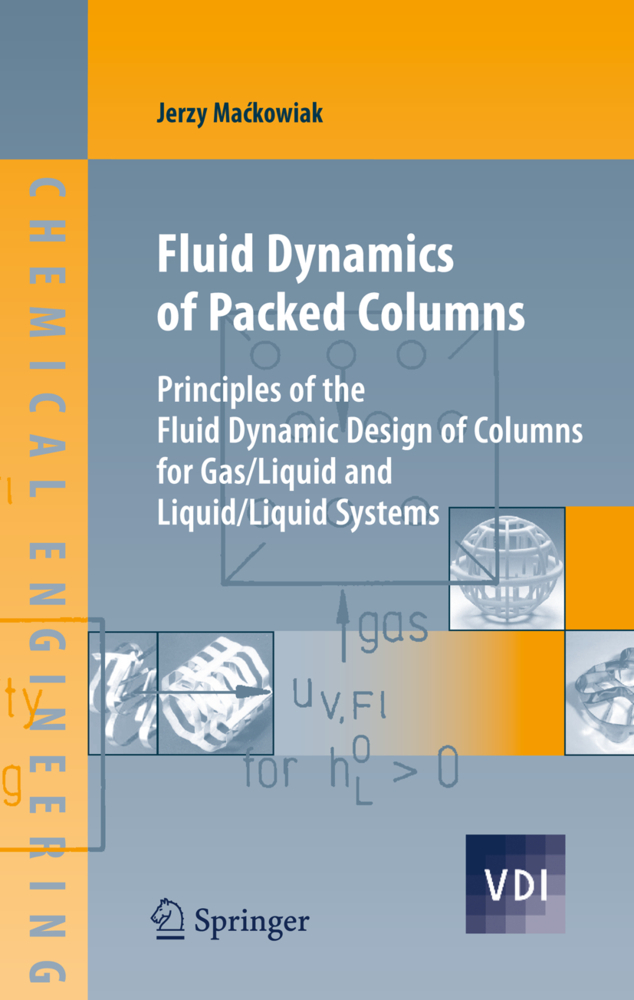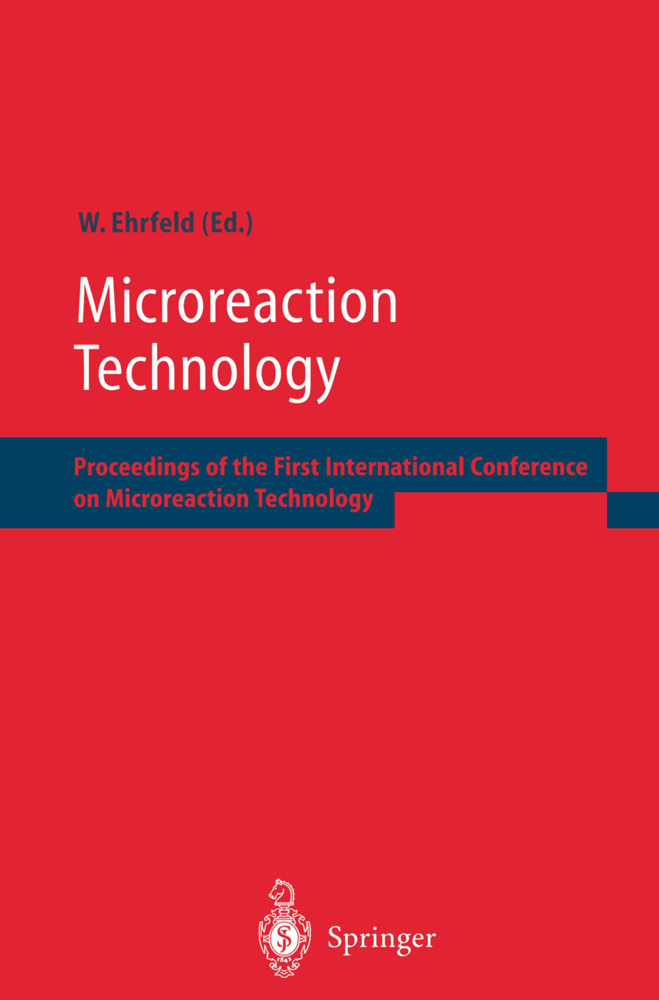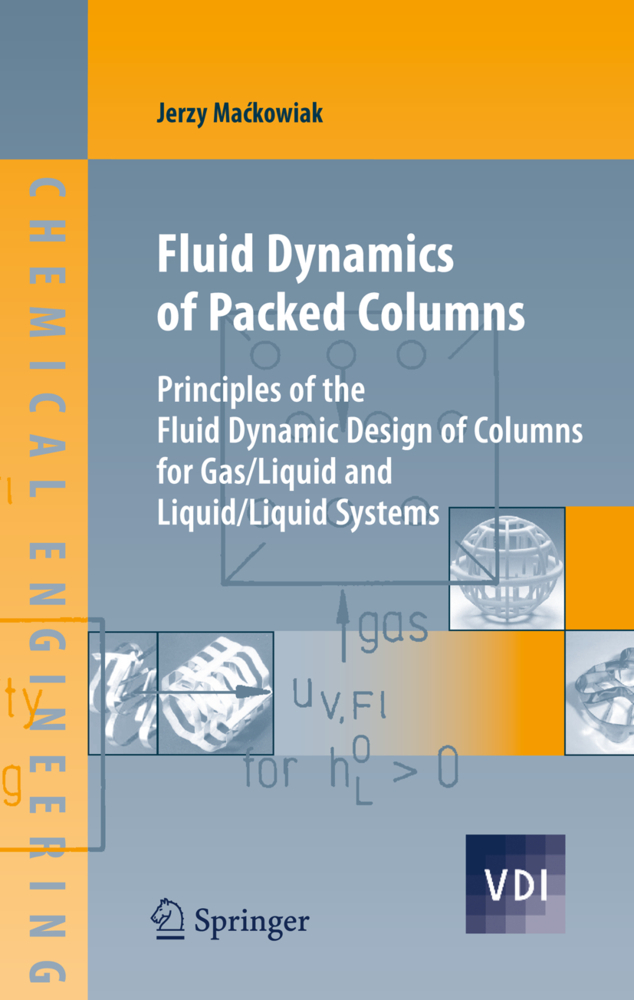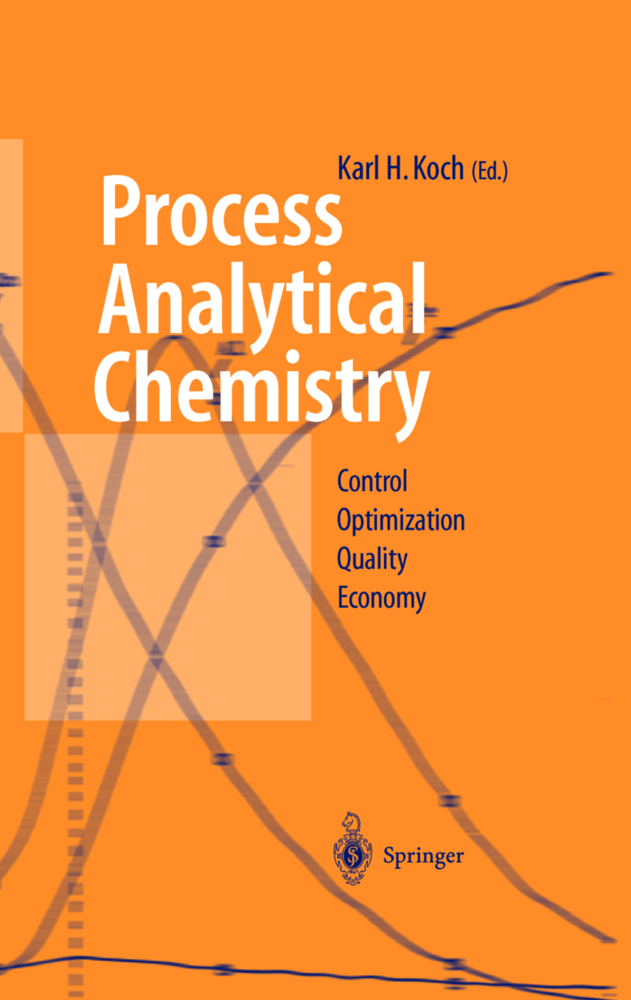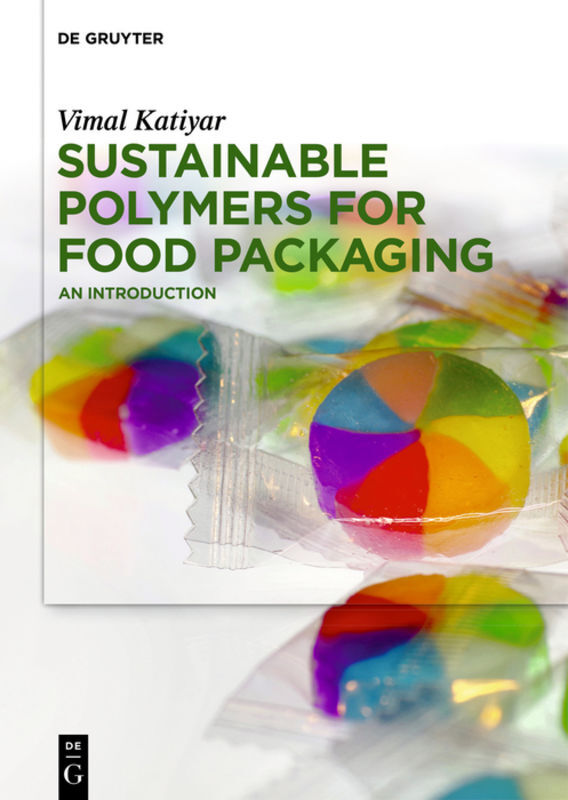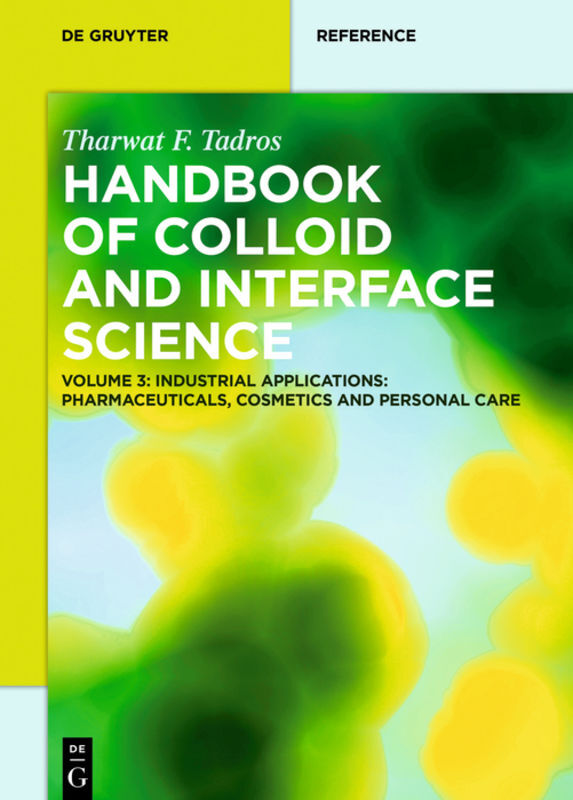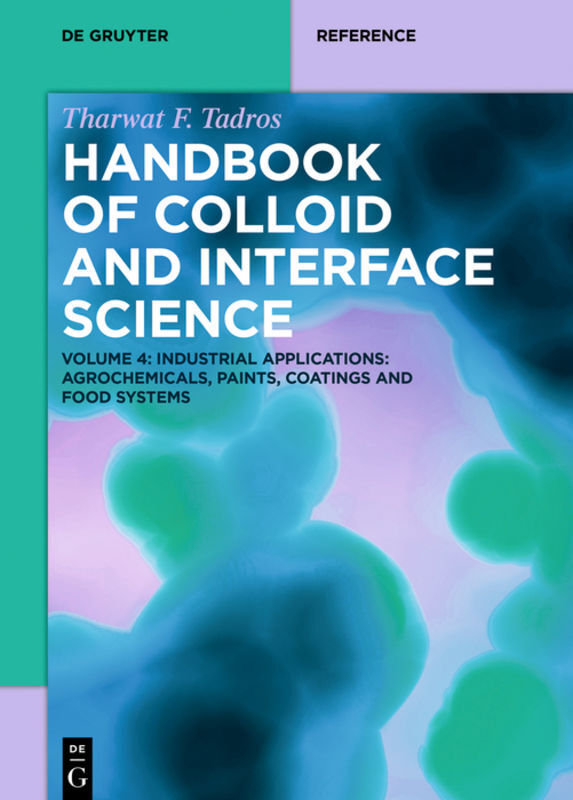Modern Chemical Technology and Emission Control
Modern Chemical Technology and Emission Control
This text of applied chemistry considers the interface between chemistry and chemical engineering, using examples of some of the important process in dustries. Integrated with this is detailed consideration of measures which may be taken for avoidance or control of potential emissions. This new emphasis in applied chemistry has been developed through eight years of experience gained from working in industry in research, development and environment al control fields, plus twelve years of teaching here using this approach. It is aimed primarily towards science and engineering students as well as to envi ronmentalists and practising professionals with responsibilities or an interest in this interface. By providing the appropriate process information back to back with emis sions and control data, the potential for process fine-tuning is improved for both raw material efficiency and emission control objectives. This approach also emphasizes integral process changes rather than add-on units for emis sion control. Add-on units have their place, when rapid action on an urgent emission problem is required, or when control simply is not feasible by pro cess integral changes alone. Obviously fundamental process changes for emission containment are best conceived at the design stage. However, at whatever stage process modifications are installed, this approach to control should appeal to the industrialist in particular, in that something more sub stantial than decreased emissions may be gained.
1.2 Types and Significance of Information
1.3 The Value of Integration
1.4 The Economy of Scale
1.5 Chemical Processing
1.5.1 Types of Reactor
1.5.2 Fluid Flow Through Pipes
1.5.3 Controlling and Recording Instrumentation
1.5.4 Costs of Operation
1.5.5 Conversion and Yield
1.5.6 Importance of Reaction Rate
1.6 Chemical Volume Perspectives
Relevant Bibliography
References
2 Air Quality and Emission Control
2.1 Significance of Man's Activity on Atmospheric Quality
2.1.1 Natural Contaminants
2.2 Classification of Air Pollutants
2.2.1 Quantification and Identification of Particulates
2.2.2 Quantification and Identification of Aerosols
2.2.3 Analysis of Gaseous Air Pollutants
2.2.3.1 Wet Chemical Analysis of Gases
2.2.3.2 Instrumental Methods for Gas Analysis
2.2.3.3 Concentration Units for Gases in Air
2.2.3.4 Biological Methods for Air Pollution Assessment
2.3 Effects of Air Pollutants
2.4 Air Pollutant Inventories, and Pollutant Weighting
2.4.1 Automotive Emission Control
2.4.2 Air Pollutant Weighting
2.5 Methods and Limitations of Air Pollutant Dispersal
2.6 Air Pollution Abatement by Containment
2.6.1 Pre-combustion Removal Methods
2.7 Post-combustion Emission Control
2.7.1 Particulate and Aerosol Collection Theory
2.7.2 Particulate and Aerosol Collection Devices
2.7.3 Hydrocarbon Emission Control
2.7.4 Control of Sulfur Dioxide Emissions
2.7.5 Control of Nitrogen Oxide Emissions
Relevant Bibliography
References
3 Water Quality and Emission Control
3.1 Water Quality, Supply, and Waste Water Treatment
3.2 Water Quality Criteria and Their Measurement
3.2.1 Suspended Solids
3.2.2Dissolved Solids
3.2.3 Total Solids or Residue Analysis
3.2.4 Dissolved Oxygen Content
3.2.5 Relative Acidity and Alkalinity
3.2.6 Toxic Substances
3.2.7 Micro-organisms
3.2.8 Temperature
3.2.9 Oxygen Demand
3.2.10 Biological Indicators
3.3 Water Quality Related to End Uses
3.4 Treatment of Municipal Water Supplies
3.4.1 Simple Municipal Water Treatment
3.4.2 More Elaborate Municipal Water Treatment Methods
3.4.3 Municipal Water by Desalination
3.4.4 Water Quality Requirements of Industry
3.5 Treatment of Municipal Waste Waters
3.5.1 Discharge Requirements, and Remedies to Post-Discharge Degradation
3.5.2 Stream Assimilatory Capacities
3.5.3 Primary and Secondary Sewage Treatment
3.5.4 Tertiary, or Advanced Sewage Treatment
3.5.5 Sludge Handling and Disposal
3.6 Industrial Liquid Waste Disposal
3.6.1 Aqueous Wastes With High Suspended Solids
3.6.2 Aqueous Wastes Containing an Immiscible Liquid
3.6.3 Heated Effluent Discharges
3.6.4 Aqueous Waste Streams with a High Oxygen Demand
3.6.5 Highly Coloured Waste Waters
3.6.6 Fluid and Solid Combustible Wastes
3.6.7 Neutralization and Volume Reduction of Intractible Waste Streams
3.6.8 Ultimate Destruction or Disposal of Hazardous Wastes
Relevant Bibliography
References
4 Natural and Derived Sodium and Potassium Salts
4.1 Sodium Chloride
4.1.1 Solar Salt
4.1.2 Sodium Chloride by Conventional Mining
4.1.3 Solution Mining of Sodium Chloride
4.1.4 New Developments in Sodium Chloride Recovery Ill
4.2 Potassium Chloride Ill
4.2.1 Potassium Chloride Production and Use Pattern Ill
4.2.2 Potassium Chloride Recovery from Natural Brines
4.2.3 Potassium Chloride by Conventional Mining and Froth Flotation
4.2.4 Solution Mining of Potassium Chloride
4.2.5 Environmental Aspects of Sodium and Potassium Chloride Recovery
4.2.6 New Developments in Potassium Chloride Recovery
4.3 Sodium Sulfate
4.3.1 Production and Use Pattern for Sodium Sulfate
4.3.2 Recovery from Natural Brines
4.3.3 By-product Sodium Sulfate
Relevant Bibliography
References
5 Industrial Bases by Chemical Routes
5.1 Calcium Carbonate
5.2 Calcium Oxide
5.2.1 Lime Kiln Emission Control
5.2.2 Uses of Calcium Oxide
5.3 Calcium Hydroxide
5.3.1 Uses of Calcium Hydroxide
5.4 Natural and Synthetic Sodium Carbonate
5.4.1 Environmental and Related Concerns of Sodium Carbonate Production
5.4.2 Uses of Sodium Carbonate
5.5 Sodium Hydroxide by Causticization
5.5.1 Emission Controls for the Causticization Process
Relevant Bibliography
References
6 Electrolytic Sodium Hydroxide and Chlorine and Related Commodities.
6.1 Electrochemical Background and Brine Pretreatment
6.1.1 Brine Electrolysis in Diaphragm Cells
6.1.2 Brine Electrolysis in Chlorate Cells
6.1.3 Purification of Crude Diaphragm Cell Products
6.2 Electrochemical Aspects of Brine Electrolysis
6.3 Brine Electrolysis in Mercury Cells
6.4 Emission Control Aspects of Brine Electrolysis
6.5 New Developments in Brine Electrolysis
6.6 Chlorine and Sodium Hydroxide Production, Use and Balance
Relevant Bibliography
References
7 Sulfur and Sulfuric Acid
7.1 Commercial Production of Sulfur
7.2 Properties of Elemental Sulfur
7.3 Sulfur Recovery by Mining and Retorting
7.4 Frasch Sulfur
7.4.1 Environmental Aspects of Frasch Operations
7.5 Sulfur from Sour Natural Gas
7.5.1 Amine Absorption Process for Hydrogen Sulfide Removal
7.5.2 Claus Process Conversion of Hydrogen Sulfide to Sulfur
7.6 New Developments and Emission Controls, Claus Technology
7.7 Sulfuric Acid
7.7.1 Contact Process Sulfuric Acid
7.8 Chamber Process Sulfuric Acid
7.9 Emission Containment for Sulfuric Acid Plants
7.9.1 Contact Process Sulfuric Acid Emission Control
7.9.2 Emission Control for Chamber Process Acid Plants
7.10 Recycling of Sulfuric Acid
Relevant Bibliography
References
8 Phosphorus and Phosphoric Acid
8.1 Phosphate Rock Deposits and Beneficiation
8.1.1 End Use Areas for Phosphate Rock
8.1.2 Environmental Impacts of Phosphate Rock Processing
8.2 Elemental Phosphorus
8.2.1 Electric Furnace Phosphorus
8.2.2 Uses of Elemental Phosphorus
8.2.3 Environmental Aspects of Phosphorus Production
8.3 Phosphoric Acid via Phosphorus Combustion
8.3.1 Environmental Features of Furnace Phosphoric Acid Production
8.4 Phosphoric Acid Using Sulfuric Acid Acidulation
8.4.1 Operation of the Acidulation Process
8.4.2 New Developments and Variations on Sulfuric Acid Acidulation Method
8.4.3 Emission Control Measures for Wet Process Acid
8.5 Phosphoric Acid Using Hydrochloric Acid Acidulation
8.5.1 Product Recovery by Solvent Extraction
8.5.2 Haifa (or IMI) Phosphoric Acid Process Details
8.5.3 Haifa Process Byproducts and Waste Disposal
8.6 Major Producers and Users of Phosphoric Acid
Relevant Bibliography
References
9 Ammonia, Nitric Acid and their Derivatives
9.1 Ammonia, Historical Background
9.1.1 Principles of Ammonia Synthesis: the Haber, or Haber-Bosch Process
9.1.2 Feedstocks for Ammonia Synthesis, Air Distillation
9.1.3 Ammonia Feedstocks, Reforming and Secondary Reforming
9.1.4 Ammonia Synthesis
9.1.5 Major Uses of Ammonia
9.1.6 New Developments in Ammonia Synthesis Technology
9.1.7 Environmental Concerns of Ammonia Production
9.2 Production of Nitric Acid
9.2.1 Nitric Acid Background
9.2.2 Nitric Acid by Ammonia Oxidation, Chemistry and Process Considerations
9.2.3 Process Description
9.2.4 Nitric Acid Concentrations and Market
9.2.5 Nitric Acid Process Variants and New Developments
9.2.6 Emission Control Features
9.3 Commercial Ammonium Nitrate
9.3.1 Ammonium Nitrate Background
9.3.2 Production of Ammonium Nitrate
9.4 Production of Urea
9.5 Synthetic Fertilizers
9.5.1 Fertilizer Composition
9.5.2 Formulation of Major Active Constituents
9.5.3 Environmental Aspects of Fertilizer Production and Use
Relevant Bibliography
References
10 Aluminum and Compounds
10.1 Historical Background
10.2 Production of Alumina from Bauxite: The Bayer Process
10.3 Aluminum by the Electrolysis of Alumina
10.4 New Developments in Aluminum Production
10.5 Emission Control Problems and Solutions
10.5.1 Environmental Impacts of Bayer Aluminum from Bauxite
10.5.2 Aluminum Smelter Emission Control Problems
10.5.3 Smelter Emission Control Strategies
10.6 Properties and Uses of Aluminum and its Compounds
10.6.1 Preparation and Uses of Aluminum Compounds
Relevant Bibliography
References
11 Ore Enrichment and Smelting of Copper
11.1 Early Development
11.2 Ore Occurrence and Beneficiation of Low Grades
11.2.1 Beneficiation of Low Grades Ores by Froth Flotation
11.2.2 Smelting of Concentrates Derived from Copper Ores
11.2.3 Electro-refining of Smelted Copper
11.3 Fabrication and End Uses
11.4 Emission Control Practice Related to Copper Processing
11.4.1 Mining and Concentration
11.4.2 Smelter Operation
11.5 Hydrometallurgical Copper Recovery
11.5.1 Basis Principles
11.5.2 New Hydrometallurgical Developments
Relevant Bibliography
References
12 Production of Iron and Steel
12.1 Early History and Development
12.2 Reduction of Iron Ores to Iron
12.2.1 Direct Reduction
12.2.2 Blast Furnace Reduction of Iron Ores to Pig Iron
12.3 The Making of Mild, and Carbon Steels
12.3.1 Pneumatic Steelmaking: The Bessemer Process
12.3.2 The Open Hearth Process
12.3.3 Electric Furnace Steel
12.4 Recent Developments: Oxygen Steelmaking
12.5 Iron and Steels, and their Properties and Uses
12.5.1 Iron-Carbon Alloys: Steels, and Cast Iron
12.5.2 Alloy Steels
12.6 Emission Control in the Production of Iron and Steel
12.6.1 Air Pollutants and Control Measures
12.6.2 Water Pollutants and Control Measures
Relevant Bibliography
References
13 Production of Pulp and Paper
13.1 Background and Distribution of the Industry
13.2 Wood Composition and Preparation for Pulping
13.2.1 Wood Composition and Morphology
13.2.2 Wood Preparation for Pulping
13.3 Mechanical Pulping of Wood
13.3.1 Stone Groundwood
13.3.2 Chip Refiner Groundwood
13.3.3 Thermomechanical Pulp (TMP)
13.4 Chemical Pulping Processes
13.4.1 Chemimechanical Pulping
13.4.2 Semichemical Pulping
13.4.3 Chemical Pulping
13.4.3.1 Acid Sulfite Pulping
13.4.3.2 Other Sulfite-based Pulping Processes
13.4.3.3 Alkaline Pulping: The Soda, and Kraft (Sulfate) Processes
13.5 Bleaching of Wood Pulps
13.5.1 Bleaching of Mechanical and Chemimechanical Pulps
13.5.2 Bleaching of Chemical Pulps
13.6 Market Pulp, and Papermaking
13.7 Potential Pulping Emissions and Control Measures
13.7.1 Effluents of Mechanical Pulping
13.7.2 Control of Emissions from Kraft Pulping
13.7.2.1 Air Pollution Problems and Control
13.7.2.2 Water Pollution Control Practices
13.7.3 Environmental Impacts of Papermaking and Paper Recycling
Relevant Bibliography
References
14 Fermentation Processes
14.1 Introduction and General Principles
14.2 Brewing of Beer
14.2.1 Details of the Steps Involved in Brewing
14.2.2 Product Variety and Quality
14.2.3 Brewing Emissions and Controls
14.3 Winemaking
14.3.1 Classification of Wines
14.3.2 Principal Steps of Winemaking
14.3.3 Utilization and Disposal of Winery Operating Wastes
14.4 Beverage Spirits
14.4.1 Specifying the Alcohol Content of Spirits
14.4.2 Steps in Spirits Production
14.4.3 Distillation of "Beers"
14.4.4 Distinct Distilled Beverage Products
14.4.5 Environmental Aspects of Distillery Operations
14.5 Industrial Ethyl Alcohol
14.6 Aerobic Fermentations
14.6.1 Operating Details of Aerobic Fermentation
14.6.2 Important Aerobic Fermentations to Single Cell Protein
14.6.3 Examples of Aerobic Fermantation of Hydrocarbon Substrates
14.6.4 Amino Acids by Fermentation
14.6.5 Other Important Aerobic Fermentation Products
14.6.6 Soluble, and Immobilized Enzymes
Relevant Bibliography
References
15 Petroleum Production and Transport
15.1 Production of Conventional Petroleum
15.1.1 Modern Exploration and Drilling for Oil and Gas
15.1.2 Petroleum Production
15.1.3 Economizing Techniques
15.1.4 Supply Prospects of Conventional Petroleum
15.2 Liquid Fuel from Non-Conventional Geological Sources
15.2.1 Petroleum Recovery from Tar Sands
15.2.2 Petroleum from the Oil Shales
15.3 Environmental Aspects of Petroleum Production
15.3.1 From the Exploratory Geology Stage
15.3.2 Impacts of Exploratory and Production Drilling Activities
15.3.3 Emission Problems of Synthetic Crude Production
15.3.4 Petroleum Shipment
15.3.5 Oil Recovery and Cleanup from Oil Spills
Relevant Bibliography
References
16 PetroleumRefining
16.1 Composition of Conventional Petroleum
16.2 Pretreatment and Distillation
16.2.1 Crude Oil Desalting
16.2.2 Petroleum Distillation
16.3 Molecular Modification for Gasoline Production
16.3.1 Thermal Cracking of Gas Oils
16.3.2 Catalytic Cracking
16.3.3 Polymer and Alkylate Gasoline
16.3.4 Upgrading of Gasoline Components
16.3.5 Gasoline Blending
16.4 Manufacture of Lubricating Oils
16.4.1 Vacuum Fractionation
16.4.2 Solvent Dewaxing
16.4.3 Lubricating Oil Decolourization
16.4.4 Formulation of Lubricating Oils
16.4.5 Synthetic Engine Oils
16.5 Fuel Oils, Asphalts, and Pitches
16.5.1 Distillate Fuel Oils
16.5.2 Residual Fuel Oils, Asphalts and Pitches
16.5.3 Asphalts and Pitches
16.6 Refinery Emission Problems and Control
16.6.1 Atmospheric Emission Control
16.6.2 Aqueous Emission Control
16.6.3 Refinery Waste Disposal Practices
Relevant Bibliography
References
Formulae and Conversion Factors.
1 Background and Technical Aspects of the Chemical Industry
1.1 Important General Characteristics1.2 Types and Significance of Information
1.3 The Value of Integration
1.4 The Economy of Scale
1.5 Chemical Processing
1.5.1 Types of Reactor
1.5.2 Fluid Flow Through Pipes
1.5.3 Controlling and Recording Instrumentation
1.5.4 Costs of Operation
1.5.5 Conversion and Yield
1.5.6 Importance of Reaction Rate
1.6 Chemical Volume Perspectives
Relevant Bibliography
References
2 Air Quality and Emission Control
2.1 Significance of Man's Activity on Atmospheric Quality
2.1.1 Natural Contaminants
2.2 Classification of Air Pollutants
2.2.1 Quantification and Identification of Particulates
2.2.2 Quantification and Identification of Aerosols
2.2.3 Analysis of Gaseous Air Pollutants
2.2.3.1 Wet Chemical Analysis of Gases
2.2.3.2 Instrumental Methods for Gas Analysis
2.2.3.3 Concentration Units for Gases in Air
2.2.3.4 Biological Methods for Air Pollution Assessment
2.3 Effects of Air Pollutants
2.4 Air Pollutant Inventories, and Pollutant Weighting
2.4.1 Automotive Emission Control
2.4.2 Air Pollutant Weighting
2.5 Methods and Limitations of Air Pollutant Dispersal
2.6 Air Pollution Abatement by Containment
2.6.1 Pre-combustion Removal Methods
2.7 Post-combustion Emission Control
2.7.1 Particulate and Aerosol Collection Theory
2.7.2 Particulate and Aerosol Collection Devices
2.7.3 Hydrocarbon Emission Control
2.7.4 Control of Sulfur Dioxide Emissions
2.7.5 Control of Nitrogen Oxide Emissions
Relevant Bibliography
References
3 Water Quality and Emission Control
3.1 Water Quality, Supply, and Waste Water Treatment
3.2 Water Quality Criteria and Their Measurement
3.2.1 Suspended Solids
3.2.2Dissolved Solids
3.2.3 Total Solids or Residue Analysis
3.2.4 Dissolved Oxygen Content
3.2.5 Relative Acidity and Alkalinity
3.2.6 Toxic Substances
3.2.7 Micro-organisms
3.2.8 Temperature
3.2.9 Oxygen Demand
3.2.10 Biological Indicators
3.3 Water Quality Related to End Uses
3.4 Treatment of Municipal Water Supplies
3.4.1 Simple Municipal Water Treatment
3.4.2 More Elaborate Municipal Water Treatment Methods
3.4.3 Municipal Water by Desalination
3.4.4 Water Quality Requirements of Industry
3.5 Treatment of Municipal Waste Waters
3.5.1 Discharge Requirements, and Remedies to Post-Discharge Degradation
3.5.2 Stream Assimilatory Capacities
3.5.3 Primary and Secondary Sewage Treatment
3.5.4 Tertiary, or Advanced Sewage Treatment
3.5.5 Sludge Handling and Disposal
3.6 Industrial Liquid Waste Disposal
3.6.1 Aqueous Wastes With High Suspended Solids
3.6.2 Aqueous Wastes Containing an Immiscible Liquid
3.6.3 Heated Effluent Discharges
3.6.4 Aqueous Waste Streams with a High Oxygen Demand
3.6.5 Highly Coloured Waste Waters
3.6.6 Fluid and Solid Combustible Wastes
3.6.7 Neutralization and Volume Reduction of Intractible Waste Streams
3.6.8 Ultimate Destruction or Disposal of Hazardous Wastes
Relevant Bibliography
References
4 Natural and Derived Sodium and Potassium Salts
4.1 Sodium Chloride
4.1.1 Solar Salt
4.1.2 Sodium Chloride by Conventional Mining
4.1.3 Solution Mining of Sodium Chloride
4.1.4 New Developments in Sodium Chloride Recovery Ill
4.2 Potassium Chloride Ill
4.2.1 Potassium Chloride Production and Use Pattern Ill
4.2.2 Potassium Chloride Recovery from Natural Brines
4.2.3 Potassium Chloride by Conventional Mining and Froth Flotation
4.2.4 Solution Mining of Potassium Chloride
4.2.5 Environmental Aspects of Sodium and Potassium Chloride Recovery
4.2.6 New Developments in Potassium Chloride Recovery
4.3 Sodium Sulfate
4.3.1 Production and Use Pattern for Sodium Sulfate
4.3.2 Recovery from Natural Brines
4.3.3 By-product Sodium Sulfate
Relevant Bibliography
References
5 Industrial Bases by Chemical Routes
5.1 Calcium Carbonate
5.2 Calcium Oxide
5.2.1 Lime Kiln Emission Control
5.2.2 Uses of Calcium Oxide
5.3 Calcium Hydroxide
5.3.1 Uses of Calcium Hydroxide
5.4 Natural and Synthetic Sodium Carbonate
5.4.1 Environmental and Related Concerns of Sodium Carbonate Production
5.4.2 Uses of Sodium Carbonate
5.5 Sodium Hydroxide by Causticization
5.5.1 Emission Controls for the Causticization Process
Relevant Bibliography
References
6 Electrolytic Sodium Hydroxide and Chlorine and Related Commodities.
6.1 Electrochemical Background and Brine Pretreatment
6.1.1 Brine Electrolysis in Diaphragm Cells
6.1.2 Brine Electrolysis in Chlorate Cells
6.1.3 Purification of Crude Diaphragm Cell Products
6.2 Electrochemical Aspects of Brine Electrolysis
6.3 Brine Electrolysis in Mercury Cells
6.4 Emission Control Aspects of Brine Electrolysis
6.5 New Developments in Brine Electrolysis
6.6 Chlorine and Sodium Hydroxide Production, Use and Balance
Relevant Bibliography
References
7 Sulfur and Sulfuric Acid
7.1 Commercial Production of Sulfur
7.2 Properties of Elemental Sulfur
7.3 Sulfur Recovery by Mining and Retorting
7.4 Frasch Sulfur
7.4.1 Environmental Aspects of Frasch Operations
7.5 Sulfur from Sour Natural Gas
7.5.1 Amine Absorption Process for Hydrogen Sulfide Removal
7.5.2 Claus Process Conversion of Hydrogen Sulfide to Sulfur
7.6 New Developments and Emission Controls, Claus Technology
7.7 Sulfuric Acid
7.7.1 Contact Process Sulfuric Acid
7.8 Chamber Process Sulfuric Acid
7.9 Emission Containment for Sulfuric Acid Plants
7.9.1 Contact Process Sulfuric Acid Emission Control
7.9.2 Emission Control for Chamber Process Acid Plants
7.10 Recycling of Sulfuric Acid
Relevant Bibliography
References
8 Phosphorus and Phosphoric Acid
8.1 Phosphate Rock Deposits and Beneficiation
8.1.1 End Use Areas for Phosphate Rock
8.1.2 Environmental Impacts of Phosphate Rock Processing
8.2 Elemental Phosphorus
8.2.1 Electric Furnace Phosphorus
8.2.2 Uses of Elemental Phosphorus
8.2.3 Environmental Aspects of Phosphorus Production
8.3 Phosphoric Acid via Phosphorus Combustion
8.3.1 Environmental Features of Furnace Phosphoric Acid Production
8.4 Phosphoric Acid Using Sulfuric Acid Acidulation
8.4.1 Operation of the Acidulation Process
8.4.2 New Developments and Variations on Sulfuric Acid Acidulation Method
8.4.3 Emission Control Measures for Wet Process Acid
8.5 Phosphoric Acid Using Hydrochloric Acid Acidulation
8.5.1 Product Recovery by Solvent Extraction
8.5.2 Haifa (or IMI) Phosphoric Acid Process Details
8.5.3 Haifa Process Byproducts and Waste Disposal
8.6 Major Producers and Users of Phosphoric Acid
Relevant Bibliography
References
9 Ammonia, Nitric Acid and their Derivatives
9.1 Ammonia, Historical Background
9.1.1 Principles of Ammonia Synthesis: the Haber, or Haber-Bosch Process
9.1.2 Feedstocks for Ammonia Synthesis, Air Distillation
9.1.3 Ammonia Feedstocks, Reforming and Secondary Reforming
9.1.4 Ammonia Synthesis
9.1.5 Major Uses of Ammonia
9.1.6 New Developments in Ammonia Synthesis Technology
9.1.7 Environmental Concerns of Ammonia Production
9.2 Production of Nitric Acid
9.2.1 Nitric Acid Background
9.2.2 Nitric Acid by Ammonia Oxidation, Chemistry and Process Considerations
9.2.3 Process Description
9.2.4 Nitric Acid Concentrations and Market
9.2.5 Nitric Acid Process Variants and New Developments
9.2.6 Emission Control Features
9.3 Commercial Ammonium Nitrate
9.3.1 Ammonium Nitrate Background
9.3.2 Production of Ammonium Nitrate
9.4 Production of Urea
9.5 Synthetic Fertilizers
9.5.1 Fertilizer Composition
9.5.2 Formulation of Major Active Constituents
9.5.3 Environmental Aspects of Fertilizer Production and Use
Relevant Bibliography
References
10 Aluminum and Compounds
10.1 Historical Background
10.2 Production of Alumina from Bauxite: The Bayer Process
10.3 Aluminum by the Electrolysis of Alumina
10.4 New Developments in Aluminum Production
10.5 Emission Control Problems and Solutions
10.5.1 Environmental Impacts of Bayer Aluminum from Bauxite
10.5.2 Aluminum Smelter Emission Control Problems
10.5.3 Smelter Emission Control Strategies
10.6 Properties and Uses of Aluminum and its Compounds
10.6.1 Preparation and Uses of Aluminum Compounds
Relevant Bibliography
References
11 Ore Enrichment and Smelting of Copper
11.1 Early Development
11.2 Ore Occurrence and Beneficiation of Low Grades
11.2.1 Beneficiation of Low Grades Ores by Froth Flotation
11.2.2 Smelting of Concentrates Derived from Copper Ores
11.2.3 Electro-refining of Smelted Copper
11.3 Fabrication and End Uses
11.4 Emission Control Practice Related to Copper Processing
11.4.1 Mining and Concentration
11.4.2 Smelter Operation
11.5 Hydrometallurgical Copper Recovery
11.5.1 Basis Principles
11.5.2 New Hydrometallurgical Developments
Relevant Bibliography
References
12 Production of Iron and Steel
12.1 Early History and Development
12.2 Reduction of Iron Ores to Iron
12.2.1 Direct Reduction
12.2.2 Blast Furnace Reduction of Iron Ores to Pig Iron
12.3 The Making of Mild, and Carbon Steels
12.3.1 Pneumatic Steelmaking: The Bessemer Process
12.3.2 The Open Hearth Process
12.3.3 Electric Furnace Steel
12.4 Recent Developments: Oxygen Steelmaking
12.5 Iron and Steels, and their Properties and Uses
12.5.1 Iron-Carbon Alloys: Steels, and Cast Iron
12.5.2 Alloy Steels
12.6 Emission Control in the Production of Iron and Steel
12.6.1 Air Pollutants and Control Measures
12.6.2 Water Pollutants and Control Measures
Relevant Bibliography
References
13 Production of Pulp and Paper
13.1 Background and Distribution of the Industry
13.2 Wood Composition and Preparation for Pulping
13.2.1 Wood Composition and Morphology
13.2.2 Wood Preparation for Pulping
13.3 Mechanical Pulping of Wood
13.3.1 Stone Groundwood
13.3.2 Chip Refiner Groundwood
13.3.3 Thermomechanical Pulp (TMP)
13.4 Chemical Pulping Processes
13.4.1 Chemimechanical Pulping
13.4.2 Semichemical Pulping
13.4.3 Chemical Pulping
13.4.3.1 Acid Sulfite Pulping
13.4.3.2 Other Sulfite-based Pulping Processes
13.4.3.3 Alkaline Pulping: The Soda, and Kraft (Sulfate) Processes
13.5 Bleaching of Wood Pulps
13.5.1 Bleaching of Mechanical and Chemimechanical Pulps
13.5.2 Bleaching of Chemical Pulps
13.6 Market Pulp, and Papermaking
13.7 Potential Pulping Emissions and Control Measures
13.7.1 Effluents of Mechanical Pulping
13.7.2 Control of Emissions from Kraft Pulping
13.7.2.1 Air Pollution Problems and Control
13.7.2.2 Water Pollution Control Practices
13.7.3 Environmental Impacts of Papermaking and Paper Recycling
Relevant Bibliography
References
14 Fermentation Processes
14.1 Introduction and General Principles
14.2 Brewing of Beer
14.2.1 Details of the Steps Involved in Brewing
14.2.2 Product Variety and Quality
14.2.3 Brewing Emissions and Controls
14.3 Winemaking
14.3.1 Classification of Wines
14.3.2 Principal Steps of Winemaking
14.3.3 Utilization and Disposal of Winery Operating Wastes
14.4 Beverage Spirits
14.4.1 Specifying the Alcohol Content of Spirits
14.4.2 Steps in Spirits Production
14.4.3 Distillation of "Beers"
14.4.4 Distinct Distilled Beverage Products
14.4.5 Environmental Aspects of Distillery Operations
14.5 Industrial Ethyl Alcohol
14.6 Aerobic Fermentations
14.6.1 Operating Details of Aerobic Fermentation
14.6.2 Important Aerobic Fermentations to Single Cell Protein
14.6.3 Examples of Aerobic Fermantation of Hydrocarbon Substrates
14.6.4 Amino Acids by Fermentation
14.6.5 Other Important Aerobic Fermentation Products
14.6.6 Soluble, and Immobilized Enzymes
Relevant Bibliography
References
15 Petroleum Production and Transport
15.1 Production of Conventional Petroleum
15.1.1 Modern Exploration and Drilling for Oil and Gas
15.1.2 Petroleum Production
15.1.3 Economizing Techniques
15.1.4 Supply Prospects of Conventional Petroleum
15.2 Liquid Fuel from Non-Conventional Geological Sources
15.2.1 Petroleum Recovery from Tar Sands
15.2.2 Petroleum from the Oil Shales
15.3 Environmental Aspects of Petroleum Production
15.3.1 From the Exploratory Geology Stage
15.3.2 Impacts of Exploratory and Production Drilling Activities
15.3.3 Emission Problems of Synthetic Crude Production
15.3.4 Petroleum Shipment
15.3.5 Oil Recovery and Cleanup from Oil Spills
Relevant Bibliography
References
16 PetroleumRefining
16.1 Composition of Conventional Petroleum
16.2 Pretreatment and Distillation
16.2.1 Crude Oil Desalting
16.2.2 Petroleum Distillation
16.3 Molecular Modification for Gasoline Production
16.3.1 Thermal Cracking of Gas Oils
16.3.2 Catalytic Cracking
16.3.3 Polymer and Alkylate Gasoline
16.3.4 Upgrading of Gasoline Components
16.3.5 Gasoline Blending
16.4 Manufacture of Lubricating Oils
16.4.1 Vacuum Fractionation
16.4.2 Solvent Dewaxing
16.4.3 Lubricating Oil Decolourization
16.4.4 Formulation of Lubricating Oils
16.4.5 Synthetic Engine Oils
16.5 Fuel Oils, Asphalts, and Pitches
16.5.1 Distillate Fuel Oils
16.5.2 Residual Fuel Oils, Asphalts and Pitches
16.5.3 Asphalts and Pitches
16.6 Refinery Emission Problems and Control
16.6.1 Atmospheric Emission Control
16.6.2 Aqueous Emission Control
16.6.3 Refinery Waste Disposal Practices
Relevant Bibliography
References
Formulae and Conversion Factors.
Hocking, M. B.
| ISBN | 978-3-642-69775-3 |
|---|---|
| Artikelnummer | 9783642697753 |
| Medientyp | Buch |
| Copyrightjahr | 2012 |
| Verlag | Springer, Berlin |
| Umfang | XVI, 460 Seiten |
| Abbildungen | XVI, 460 p. |
| Sprache | Englisch |

